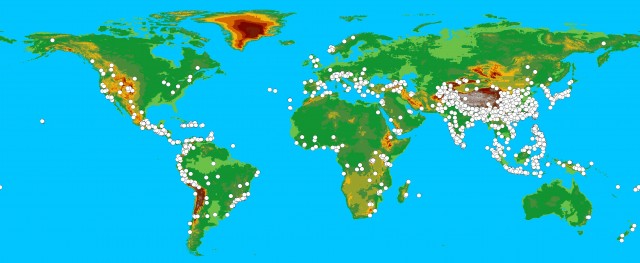Landslide deaths much higher than previously thought
Published by MAC on 2012-08-21Source: PlanetArk
Landslides not only cause the deaths of mineworkers: see our recent posting: China: Landslide hits iron ore mine in Xinyuan
They are also triggered by mineral extraction itself.
According to a study, published last week in Geology journal, landslides (excluding those caused by earthquakes) killed more than 32,000 people across the world between 2004 and 2010 - up to 10 times more than previously estimated.
In fact, according to the authors of the study, it is likely the total number has now reached 40,000.
The study identifies the "global hotspots" for landslides as:
- Along the southern edge of the Himalayan Arc
- Along the coast of southwest India and in Sri Lanka
- Along the southern and eastern coastal regions of China, extending inland ~100 km
- In central China, most notably in the mountains surrounding the Sichuan Basin
- In the mountain chains along the western edge of the Philippine Sea plate
- In the central Caribbean islands
- In a chain that follows the mountains of Central America and South America from Mexico in the north to northern Chile in the south
- In Indonesia, most notably in and around the island of Java
China heads the sorry list of fatalities, having suffered 6,860 during the study period; followed by the Phillipines (with 4,583); India (2,415); and Indonesia (2,078).
Deplorably, even since the study was published, at least 60 artisanal gold mineworkers are reported having died after a landslide at a mine in DR Congo; See: DR Congo mine collapse kills at least 60
Landslide deaths much higher than thought: study
Nina Chestney
PlanetArk
16 August 2012
Landslides killed more than 32,000 people across the world from 2004 to 2010 - up to 10 times more than previously thought, the first detailed study of the disasters showed on Thursday.
 |
| Data map of fatalities from landslides 2004-2010. Source: University of Durham |
The new data on the scale of the problem should force governments to rethink how they dealt with the slides which have left a trail of destruction from China to Central and South America, researchers said.
"Landslides are a global hazard requiring a major change in perception and policy," said David Petley, lead researcher on the study at Britain's University of Durham.
"There are things that we can do to manage and mitigate landslide risks such as controlling land use, proactive forest management and guiding development away from vulnerable areas."
Information, collected in a database in Durham and published in the journal Geology on Thursday, showed 32,322 people died in 2,620 landslides across the world from 2004 to 2010.
Previous estimates ranged from 3,000 to 7,000 deaths over the same period, said the researchers.
The sharp difference in the estimates was probably due to the introduction of better data collection methods, they added.
Last month, floods and landslides killed more than 100 people in southern Russia after two month's average rainfall fell in a few hours.
In June, about 30 people died and more than 100 went missing after a landslide in eastern Uganda.
Landslides are mass movements of rock, debris and soil, often caused by earthquakes, heavy rainfall and human activity such as timber harvesting or mining.
The Durham Fatal Landslide Database identified hotspots - among them the south-west coast of India, Sri Lanka, the southern and eastern coasts of China, the central Caribbean islands, Indonesia and mountains from Mexico to Chile.
The most fatal landslides were recorded in May to October and the most common trigger was monsoon rains, the study showed.
The Durham researchers said there was a good chance they had actually underestimated the number of landslide deaths because they had had to leave out a number of fatalities recorded following earthquakes.
It was often unclear whether people had been killed by a landslide or other after effects of a quake, they added.
Scientists have said landslides could become more common, because of rising populations, more intense rainfall and the clearing of forests.
Climate change increased the odds for the kind of extreme weather sometimes linked to landslides and other disasters, a report said last month.
(Editing by Andrew Heavens)